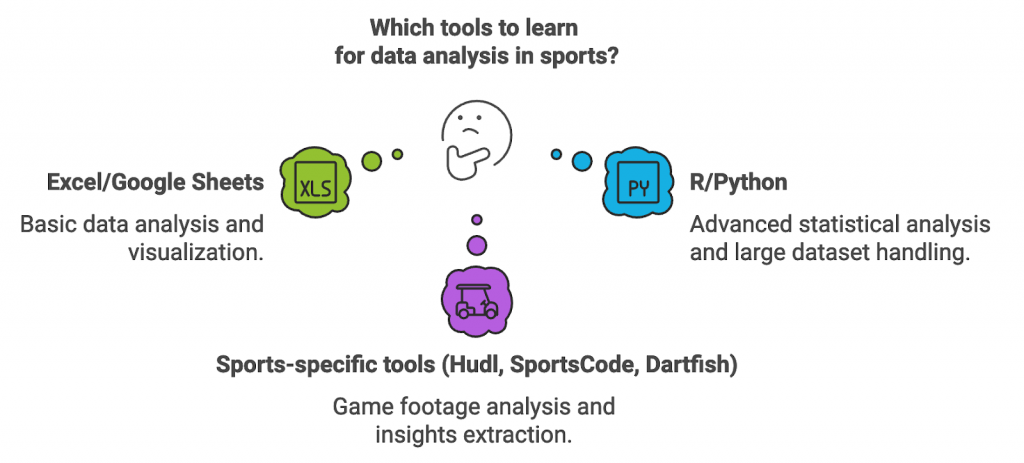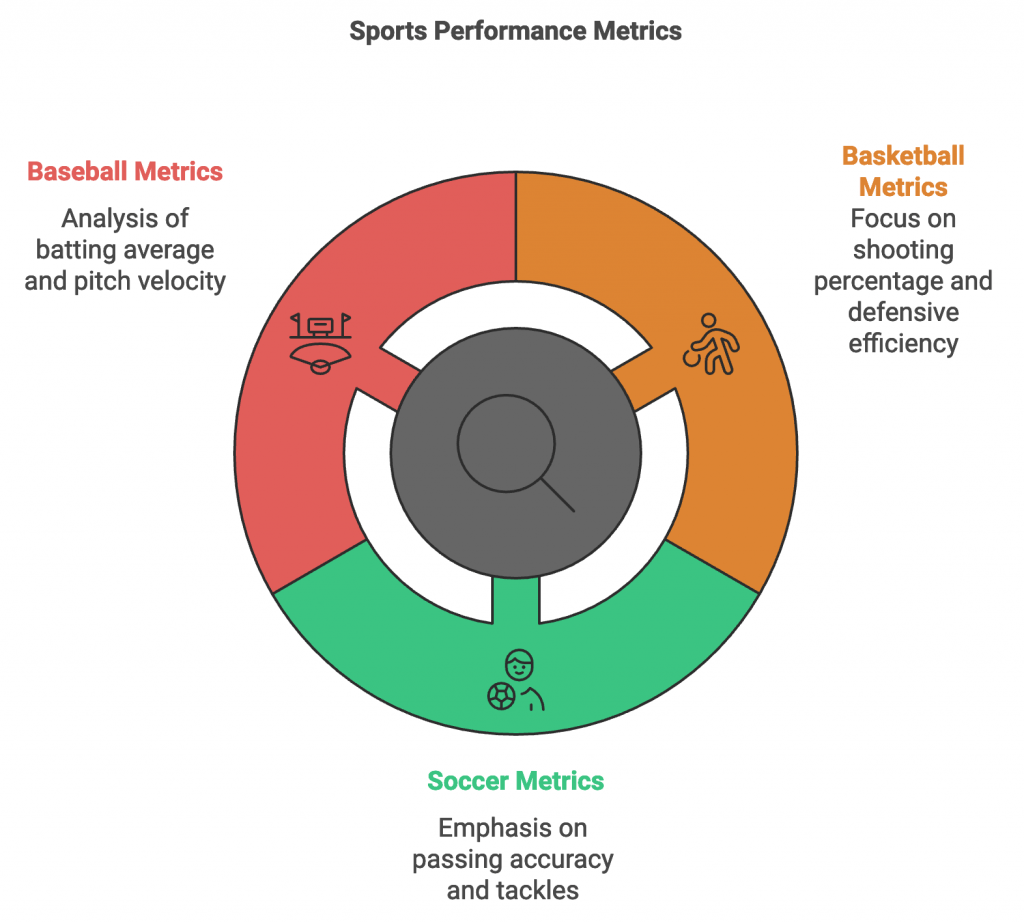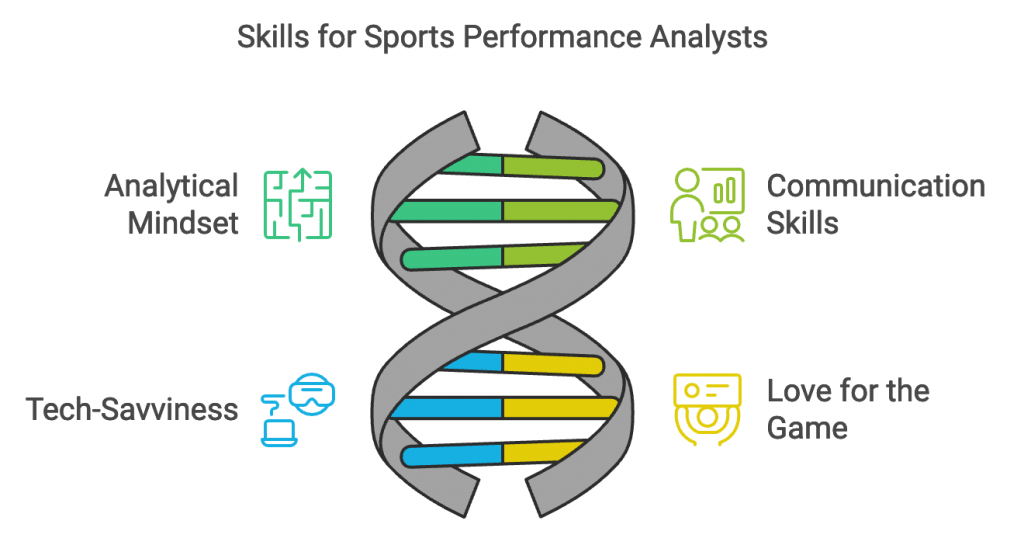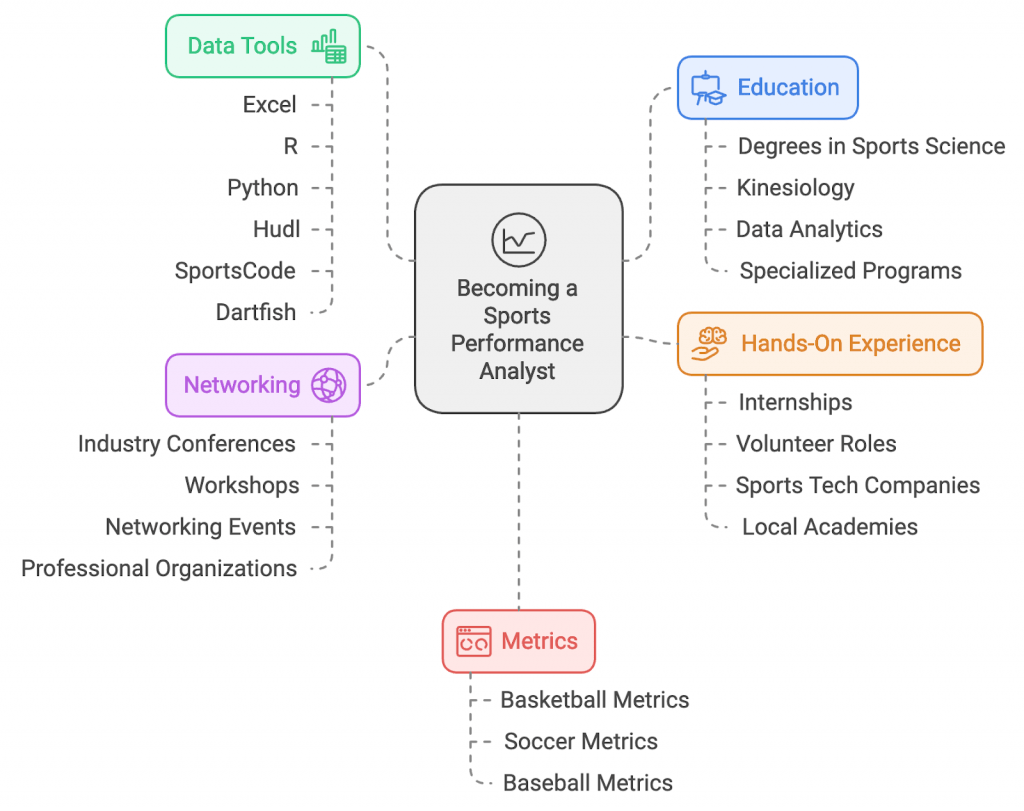How to Become a Sports Performance Analyst
If you’re the type who’s obsessed with sports stats, loves breaking down game footage, and is all about helping athletes push their limits, then sports performance analysis might just be your dream career. Sports performance analysts are the behind-the-scenes experts who use data to help teams and athletes play smarter and win bigger. Let’s discuss how to get there, what skills you need, and some real-life impact you can make in the sports world.
Why Sports Performance Analysis is So Important
Data can distinguish between winning and losing in the high-stakes sports world. Just think about how some of the biggest names in sports – like the Golden State Warriors in the NBA or Manchester City in the Premier League – are using data to inform everything from player rotations to game-day strategy. These teams invest in analysts who break down stats, track player movements, and fine-tune strategies to perfection.
Data gives coaches and athletes insight into every aspect of their performance. Imagine telling a sprinter exactly how much faster they need to start or showing a soccer forward the sweet spot on the field where they’re most likely to score. That’s the power of data, which you’ll work with as a performance analyst.
Step 1: Get the Right Education (and Pick Up Some Sports Knowledge)
Most sports performance analysts start with a degree in sports science, kinesiology, data analytics, or something similar. But let’s be real – degrees aren’t everything. If you’re already a giant fan of a sport, you’re halfway there. Knowing the game is crucial because you’ll analyze player positioning, offensive and defensive tactics, and individual player performance.
Programs like the University of Michigan’s Kinesiology Department or Loughborough University’s Sports Analytics programs offer specialized sports analysis and data science courses. If you want an edge, look for programs that provide hands-on projects with sports teams or training facilities.
Step 2: Get Obsessed with Data Tools
Being a performance analyst means you’ll live and breathe data, so you need to get comfortable with the right tools. Start with basics like Excel or Google Sheets – you’ll be surprised how much you can do with simple tools. But from there, dive into R or Python for deeper statistical analysis. Python’s libraries like Pandas and Matplotlib can help you analyze large datasets and create visualizations that make the data more accessible to interpret.
Then, there are sports-specific tools like Hudl, SportsCode, and Dartfish – all of which are huge in the industry. Analysts use these tools to break down game footage and pull out insights that aren’t visible to the naked eye. Knowing your way around this software makes you a stronger candidate and lets you hit the ground running when you land that dream job.

Step 3: Get Hands-On Experience (Wherever You Can)
Like most careers in sports, landing a performance analysis job means getting your hands dirty first. Start by looking for internships or volunteer roles with college teams, semi-pro leagues, or high school sports programs. Real experience is where you’ll learn how to turn raw data into actionable insights.
Some top brands and organizations offer opportunities in this area. Look into internships with sports tech companies like Catapult Sports (famous for their wearable performance monitors), or try connecting with your local MLS NEXT academy for soccer. These places actively integrate data into their training and might be open to ambitious young analysts looking to make a mark.
Step 4: Understand the Metrics That Matter
Each sport has unique metrics and performance indicators; as a performance analyst, knowing what to track is essential. Here’s a quick rundown of some popular sports:
- Basketball. Shooting percentage, defensive efficiency, player spacing, and pick-and-roll effectiveness.
- Soccer. Passing accuracy, tackles, distance covered, and positional play.
- Baseball. Batting average, on-base percentage, pitch velocity, and player positioning.
For example, if you’re into basketball, you’ll need to dive into Synergy Sports data to track advanced stats like shot efficiency or defensive matchups. For soccer, platforms like Opta are go-to sources for in-depth metrics, from player positioning to shot probability. The key is learning what stats coaches care about and how to provide that info clearly and effectively..

Step 5: Start Building Your Network Early
Keep in mind that in sports, who you know and what you know are crucial. Attend sports industry conferences, workshops, and networking events whenever possible. Facetime with coaches, sports directors, and other analysts can open doors to opportunities you might not find on job boards.
Consider joining organizations like the International Society of Performance Analysis of Sport (ISPAS) or the Association for Applied Sports Psychology (AASP). These groups provide resources, networking opportunities, and the latest research in performance analytics, keeping you ahead of the curve and giving you a community of like-minded pros to connect with.
Real-Life Examples of Data in Action
To understand this role’s potential, let’s look at some success stories in sports analytics.
- Moneyball & The Oakland A’s. Perhaps the most famous story in sports analytics, the Oakland A’s famously used data to build a competitive baseball team on a shoestring budget. By focusing on undervalued stats like on-base percentage, they changed the game of baseball. Now, “Moneyball” strategies are used across sports globally.
- Golden State Warriors. The Warriors’ coaching team uses data to decide who takes shots, how players are spaced on the floor, and even which lineups work best against specific opponents. This data-backed approach has helped them rack up multiple championships.
- Manchester City FC. Man City’s performance analysts track everything from player movement to passing sequences. By studying these metrics, they optimize their strategies, leading them to dominate the Premier League. They even use tracking data to know when a player is getting fatigued and should be rotated out for peak performance.
Skills That’ll Take You Far in This Role
To succeed in sports performance analysis, you need a unique mix of skills that go beyond just data crunching:
- Analytical Mindset. This goes without saying – you need to think critically about what data means and how to turn it into actionable advice.
- Communication Skills. All the data in the world is useless if you can’t explain it clearly. You’ll need to break down complex information so coaches and players understand exactly what to do with it.
- Tech-savvy. It is crucial to know how to use data analysis software, performance tracking tools, and video analysis platforms.
- Love for the Game. At the end of the day, passion for sports keeps you motivated and engaged. If you love the sport, your work as an analyst becomes all the more rewarding.

Your Career Path
A career in sports performance analysis can open doors to many exciting roles in the sports industry. Here’s a breakdown of possible paths:
- Team Analyst. Work directly with a sports team to analyze their performance data, create training strategies, and collaborate with coaches.
- Freelance Analyst. Offer your services to multiple teams or athletes, providing performance analysis and feedback on a flexible basis.
- Sports Tech Consultant. Work for a company like Catapult Sports, advising sports organizations on integrating and using data for maximum impact.
- Director of Performance. Move into a leadership role overseeing a team of analysts, shaping the data strategy for a sports organization or league.

Final Thoughts
Becoming a sports performance analyst is about blending your passion for sports with a love for data. If you’re ready to dive deep into player metrics, track stats that matter, and make a real difference on the field or court, then this is the career for you. Whether setting up drills based on player fatigue data or advising coaches on game-day strategy, you’ll be at the forefront of modern sports. Get that degree, learn those tools, and start connecting with people in the industry.



